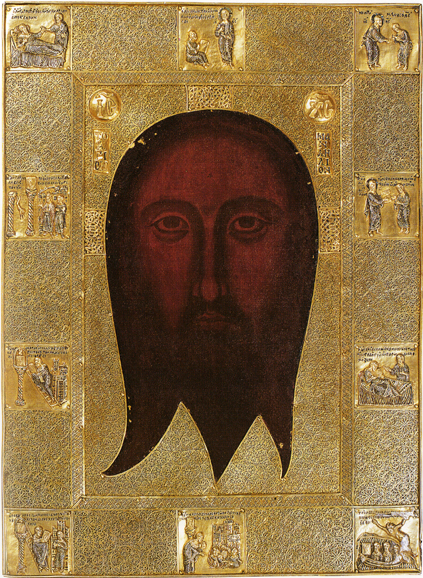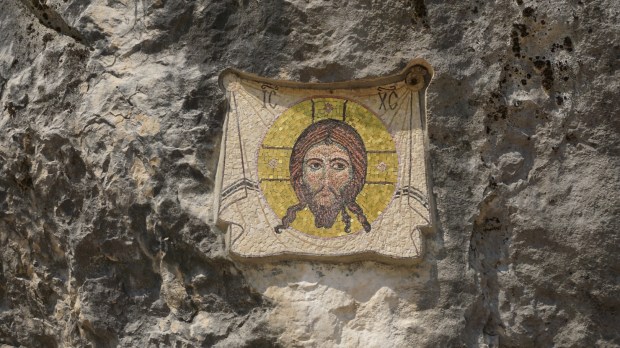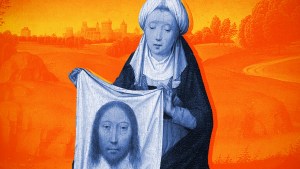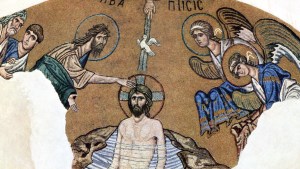The Image of Edessa is a legendary relic that was said to bear the miraculous imprint of the face of Jesus Christ. It is also known as the Mandylion – a Greek Byzantine medieval word not applied nor found in any other context, that is made up of the Greek word for “towel” or “napkin” (mandyl) and a French-ish diminutive of sorts (ion). It is, then, “the small cloth,” as if alluding to the existence of a larger one– perhaps the Holy Shroud.
Tradition claims that the Image was created when Jesus pressed a cloth to his face, leaving his features imprinted on the cloth – very much as in the legend of the veil of Veronica, the Vero Icono, the True Icon. The Image of Edessa is thus one of the most famous acheiropoieta in the Christian tradition (although known mostly in the East), and it has played an important role in the history of Christian art and devotion.
The earliest known reference to the Image of Edessa dates to the 4th century, when it described by Eusebius as a gift to the 1st-century King Abgar V “the Black” of Edessa. According to legend, Abgar had sent a letter to Jesus in the last year of his ministry inviting him to come and heal him of his illness. Jesus replied that he could not come but promised to send one of his disciples to heal Abgar. After Jesus’ death and resurrection, the apostle Thaddeus is said to have brought the Mandylion to Edessa (then a Hellenistic polis in Upper Mesopotamia, today’s Turkish Urfa) where (always according to legend) it was solemnly revered at least until the 10th century.

Over the centuries, the Image of Edessa was the subject of much speculation and controversy. Whereas some early medieval Christian writers claimed it was an authentic relic (even the Byzantine emperor Justinian ordered that a copy of the image be made and sent to Constantinople in the 6th century), others dismissed it as a mere legend, or even as a forgery or a fake acheiropoieton – a type of icon or any other kind of religious image, mostly two-dimensional, believed to have been miraculously created by supernatural means or by divine intervention, without the use of human hands.
The Image of Edessa is said to have been continuously be venerated in the Byzantine Empire until the 10th century, when it disappeared from historical records. It is believed to have been taken to Constantinople from Edessa in the 10th century. It got lost in the 12th century during the Fourth Crusade in the sack of Constantinople, and reappeared in the Saint Chapelle of Paris during the reign of Louis IX of France shortly before 1270, and it finally disappeared after the French Revolution.
The only alleged remnant of the Mandylion is the Ancha Icon or Anchiskhati, a medieval Georgian encaustic icon traditionally considered to be the Keramidion, a “holy tile” imprinted with the face of Jesus Christ miraculously transferred by contact with the Image of Edessa.



